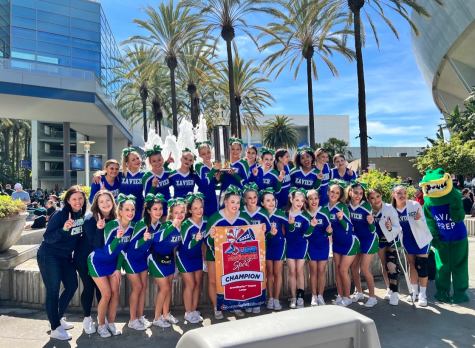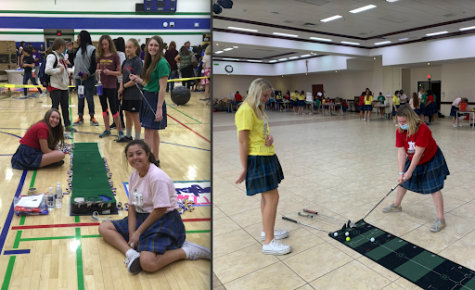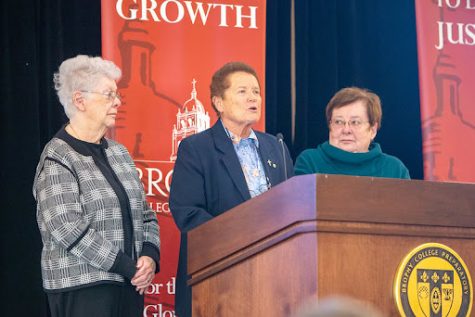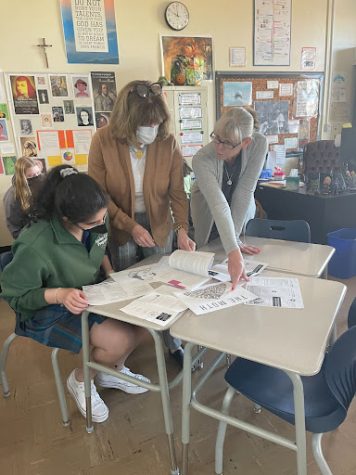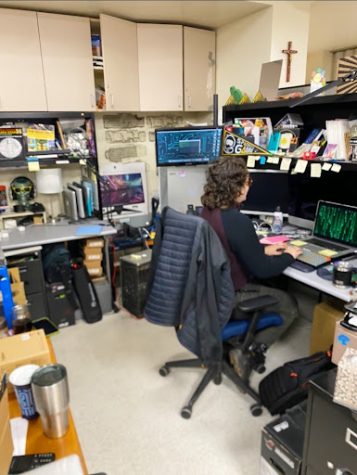Robotics returns to Xavier
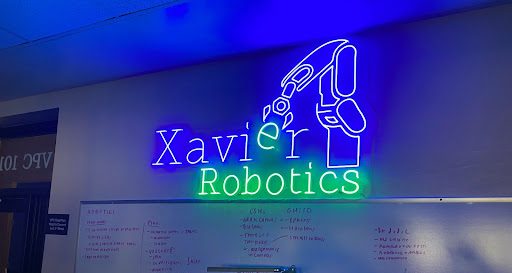
During the first semester, robotics students, with the help of Leon Tynes and the Xavier maintenance staff, worked to set up and upgrade the new robotics room downstairs in the Virginia Piper Center.
Xavier College Prep requires each of its students to take a computer science class, putting emphasis on the subject due to the ever-increasing importance of technological knowledge in today’s world. This school year, a new opportunity has come for students to be even more involved in the subject. Though discontinued for a couple of years, robotics is making a comeback at Xavier.
Under the leadership of Leon Tynes, robotics coach and computer science teacher, who is new to Xavier this year, a group of approximately thirty students are bringing the team back to life.
The program ended a couple of years ago due to the change of faculty members who were vital to the program, leaving a space that not many can fill. Sister Lynn Winsor, vice principal for activities and athletics, said, “You just can’t find robotics people right away.”
On finding a person to fill this role and to be a computer science teacher, Winsor said, “They found Mr. Tynes, and he is not only absolutely fabulous at computers, but is also a robotics expert” and “a very valuable member of our faculty.”
So far, members have spent “the past few months in garnering interest for the team, funds for our equipment, and volunteers for setting up and organizing the room,” explains Helena Richardson, a senior at Xavier who is the head of the Computer Science Honor Society and who is playing a large role in initiating the robotics program.
Being involved in robotics does not involve a strict schedule. In fact, it has been designed to be flexible so that students with busy schedules can still be involved.
Currently, the robotics room is open Monday through Thursday for members to come in and work. Small teams will be put together and they can work on their projects depending on their own schedules.
Further defining where robotics currently is, Richardson explains, “As of now, it’s more of a club in its early stage. With our room and leadership set up, we’re in the process of starting up meetings and helping everyone learn more about what’s involved in robotics.”
Tynes is not only focused on starting robotics up again, but has plans for expansion and growth in the future, saying one of the main goals is, “We want to try to get robotics to be not only just a club. We are trying to get it to be a multifaceted thing.”
Robotics will become a team in the future, as members become more committed to competition. In a club, the members do not have to compete, but as a team members would be focused and involved in competing with other schools.
There are different levels of competition, with different requirements. Tynes plans to start the team out on smaller competitions and progress to growing into larger events.
Explaining what robotics competitions entail, Tynes said, “It looks like battle bots sort of. There’s a field of play and every year the challenge is different and that particular robot is judged on its functionality. There’s always some kind of task, for example pushing something or grabbing something, but it’s different every year.”
Tynes continues to say that building robots and preparing for a competition consists of “a lot of testing, a lot of playing with it, a lot of modifying the code, so that they can get the functionality to work the way that they need to. You get in that loop of test and code and then test and code and test, code, test, tweak.”
This work results in a set of robots ready approximately halfway through the school year.
Tynes also plans to incorporate physical coding into the required Computer Programming Essentials classes and create an introduction to robotics class at Xavier for students to get exposed to robotics and to learn a basic understanding of it.
Robotics at Xavier has an edge over other schools because of the school requirement to take Computer Programming Essentials during sophomore year. At many other schools, students do not have this requirement and so consequently a smaller portion of their students have experience with coding.
Robotics leaders Richardson and Tynes both agree that an important part of restarting robotics is making it accessible and open to as many girls as possible.
Richardson said that this is “one of our biggest goals” and “any Xavier student who’s interested in learning more and getting involved is welcome.”
“We’ve got to get more girls in STEM and this starts them into that. You don’t necessarily have to go into coding, or engineering, but having that knowledge allows you to apply it anywhere that you want to. The more exposure that girls get at this age, the better they’re going to do when they go to college,” said Tynes.
Xavier robotics’ next event is on January 29, where they will be helping Brophy’s team at its invitational, the first one it has competed in since the beginning of the Covid-19 pandemic.


